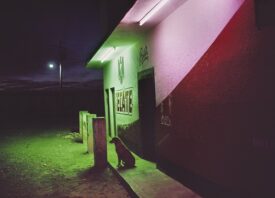Search this site
Instagrams Fetch Thousands of Dollars at 2013 Aperture Benefit Auction
 Vik Muniz [@vikmuniz], Full Moon, Rio de Janiero $5,325
Vik Muniz [@vikmuniz], Full Moon, Rio de Janiero $5,325
This year, the Aperture Foundation opened its annual benefit up to a wider range of ideas—a silent auction of Instagram photos curated by New York Times Magazine Director of Photography Kathy Ryan [@kathyryan1]. Individual cell phone photos by artists both famous and unknown sold with some going for thousands of dollars a piece.
In line with the recent redesign of Aperture Magazine, the 61-year-old foundation is making a clear effort to be contemporary, broadening its scope with new ways of engaging a wider audience. And although over $150,000 was raised from the auction alone, it was polarizing. While the selection of images and artists was indisputably well informed, some questioned what this means for the traditional structure of fine art photography.
Instagram promotes the notion that “everyone is a photographer.” This continues to make a lot of professional photographers uncomfortable as their images, informed by years of training and labor, become less separate from the photos your college roommate takes of her breakfast. Naturally, there were varying opinions about the placement of Instagram in the fine art arena. Mary Ellen Mark shared her thoughts with me; “People are bidding on something that has no value. I thought it was a joke, so I just took a cell phone picture of a real photograph. It is easy to take a good picture and so hard, almost impossible, to take a great picture. It takes years of labor to do this well. Photography is a craft, an art, a point of view. Instagram is not meant to be fine art or a beautiful object; it is social media—a means of communication.”
Other photographers like Sara Cwynar [@cwynars] appreciated the opportunity to contribute something unusual. “There is often pressure from galleries to donate the least popular image in a series to an auction,” she told me. “I was happy to contribute an Instagram photo that I was excited about rather than something from the dregs of my work. It was an opportunity to make something new.” Photographer Asger Carlsen [@asgercarlsen] also welcomed the concept; “I have nothing against the idea of selling Instagrams at auction. Although I have an Instagram account, I thought of this image more like a Polaroid, because it was printed as a unique original rather than being published to Instagram.”
It’s an inevitable progression. Gallery owner Janet Borden told me, “I think artists make art and the medium is less of an issue. Instagram pictures tend to be stupid, but then, so did Xeroxes of people’s butts.” The Aperture auction dealt with the problem of showing digital art in a physical space by creating a hybrid of the two. The photos were made using Instagram, but photographers were asked to refrain from publishing them to the app in the interest of preserving the rarity of the image. They were then printed as physical objects in an edition of 1/1. In many ways rarefying photos runs contrary to the spirit of Instagram as an open exchange of images, but nonetheless this a major step in an online direction for fine art photography.
The three highest selling Instagrams were:
Vik Muniz [@vikmuniz], Full Moon, Rio de Janiero $5,325
Alex Prager [@alexprager], Eye Grid $2,750
Matthew Pillsbury [@screenlives], Hasidic Vitali$2,500
 Alex Prager [@alexprager], Eye Grid $2,750
Alex Prager [@alexprager], Eye Grid $2,750
 Matthew Pillsbury [@screenlives], Hasidic Vitali $2,500
Matthew Pillsbury [@screenlives], Hasidic Vitali $2,500
 Kathy Ryan, photo by Matthew Leifheit
Kathy Ryan, photo by Matthew Leifheit
 Mary Ellen Mark, photo by Matthew Leifheit
Mary Ellen Mark, photo by Matthew Leifheit
 Asger Carlsen (pictured right), photo by Matthew Leifheit
Asger Carlsen (pictured right), photo by Matthew Leifheit
Feature Shoot Contributing Editor Matthew Leifheit is an independent writer, curator, and photographer based in New York City. You can see more images from this event on his blog, MATTELIFE.

